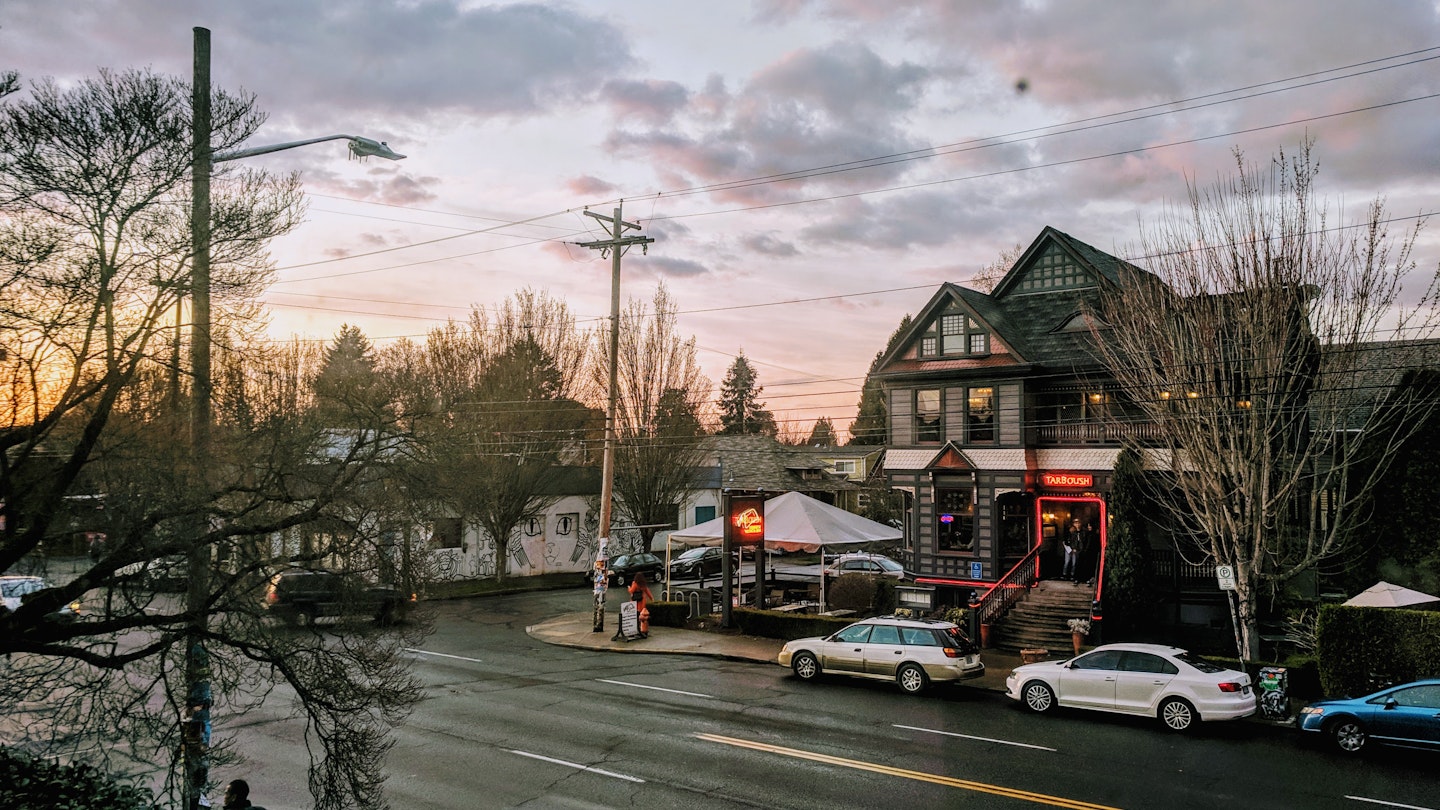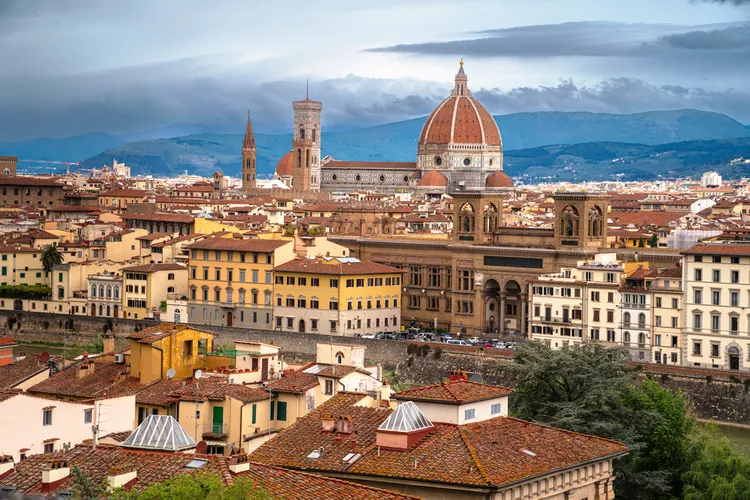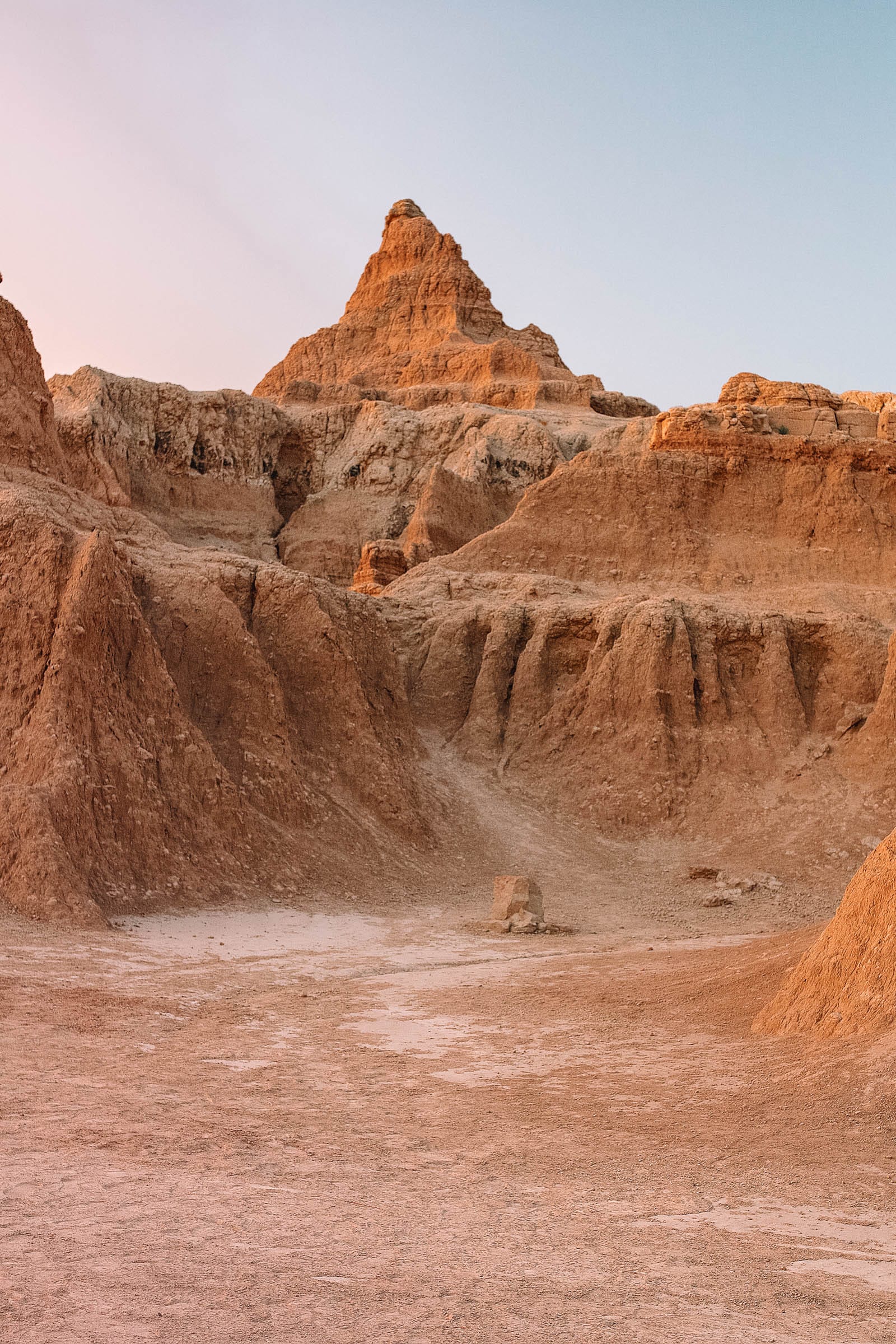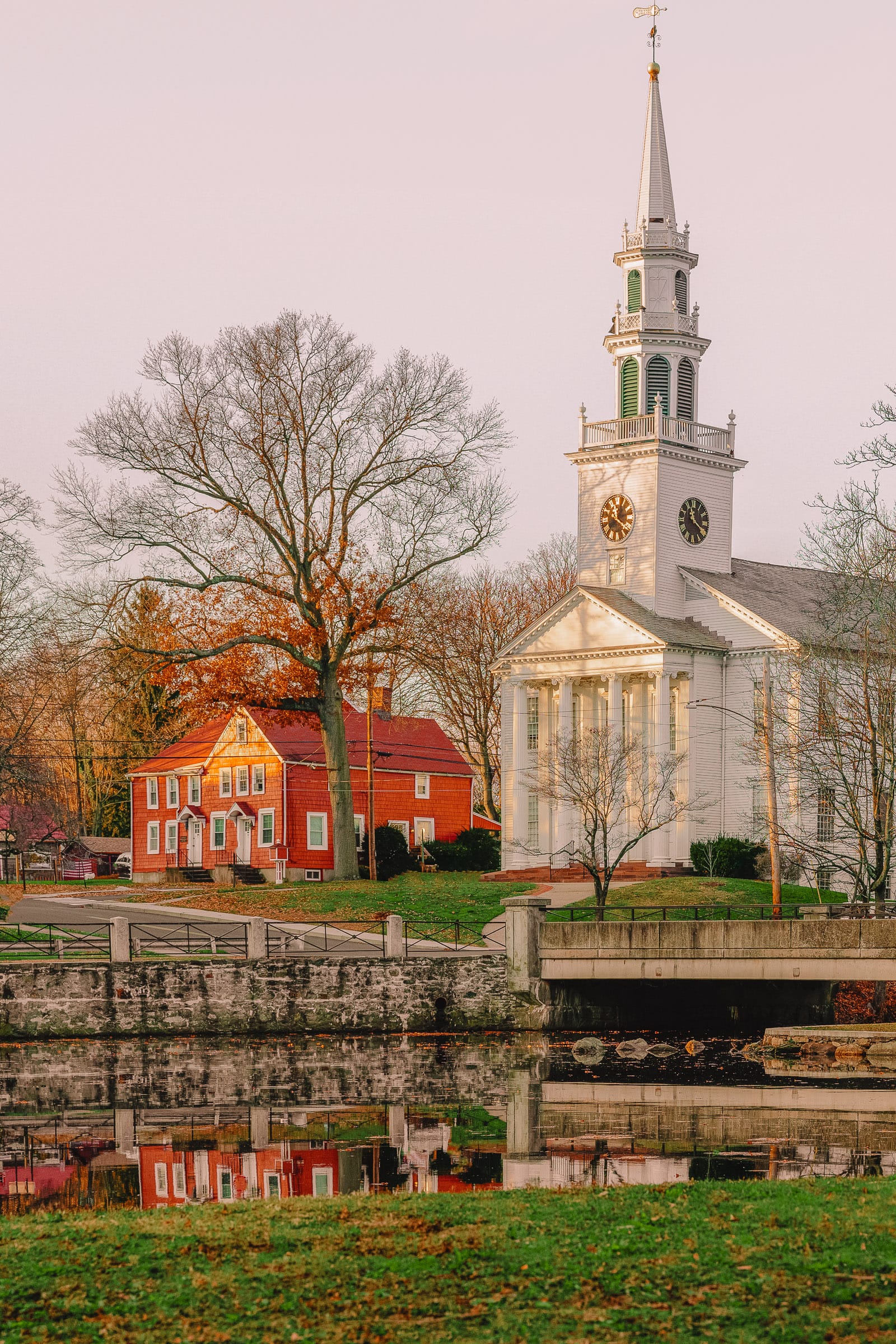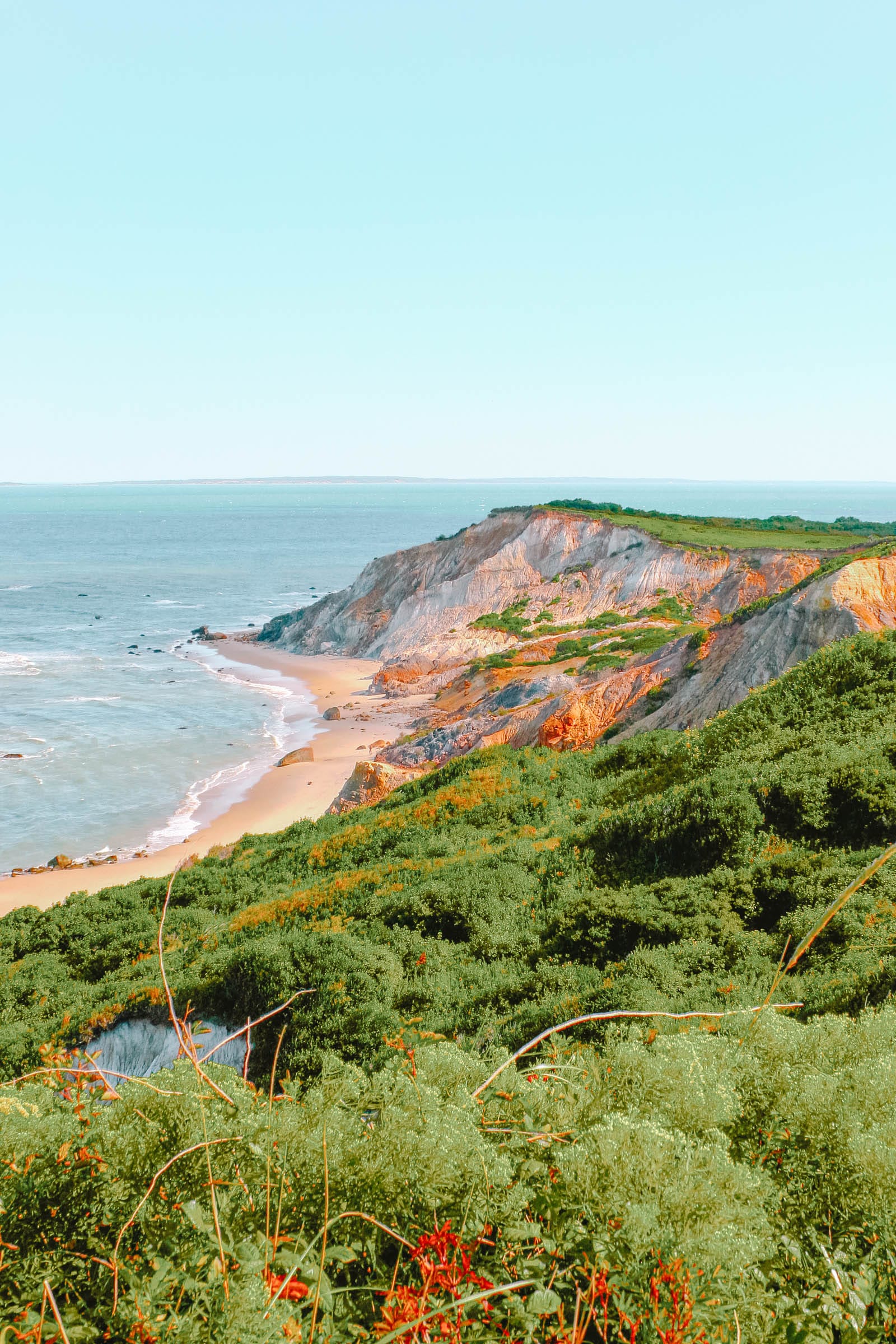Nestled against a bank of low mountains at the confluence of two rivers, the unique geography of Portland, Oregon divides the city into a patchwork of neighborhoods. Each has its own unique flavor, whether you’re looking at the unexpected street layouts of Ladd’s Addition, the Black history of Albina, the art galleries and headshops of the Alberta District, or the fabulous architecture of Laurelhurst.
Some, like Division, are named for the major thoroughfares passing through, or for a notable landmark, like the Mt. Tabor district that’s on the slopes of a defunct volcano. Others hint at the marketing strategies of the last century, like Sunnyside – the name of which was selected to lure residents living in Portland’s oldest neighborhoods, in the shadow of the West Hills, to try life on the east side of town.
If you’re wondering which Portland neighborhood is right for you, we’ve broken down each part of town into its micro-communities, with details on what to do wherever you wander during your time in Stumptown.
The Pearl District and Downtown
Best for shopping, business travelers, and first-time visitors
The workaday Southwest section of Portland is home to lots of office buildings and hotels, as well as top sights like Pioneer Courthouse Square, the Portland Art Museum and Oregon Historical Society. It’s also a transit hub – bus and light-rail lines converge here, mostly along 5th and 6th Avenues. Also in this part of town are several green parks, important performing-arts centers and plenty of top-end restaurants.
Just east of Northwest, the Pearl District is an old industrial precinct that has been transformed into Portland’s swankiest neighborhood. Warehouses have been converted to fancy lofts commanding some of the highest real-estate prices in Oregon. It’s a great place to walk around and check out upscale boutiques, trendy restaurants and art galleries.
The Alphabet District, Nob Hill, and Slabtown
Best for shopping, walking, and public transit
Encompassing three distinctive districts, Northwest Portland is home to some of the city’s top art galleries, trendy restaurants and plentiful shopping options – all connected by wonderfully walkable streets.
When Portlanders talk about ‘Northwest,’ they’re usually referring to the attractive area known as Nob Hill surrounding NW 21st and 23rd Avenues, north of West Burnside Street. The residential heart of late-19th-century Portland, this area later became the city’s upper-crust commercial strip. It’s a pleasant and scenic strolling neighborhood, anchored by vintage apartment buildings and one of the city’s best art-house cinemas.
In the face of Portland’s rapid development, industrial Slabtown is up and coming with new high-rise residences and more. Collectively, Nob Hill and Slabtown are locally referred to as the Alphabet District. The street names are in alphabetical order, starting southerly with Burnside St, which spans the entire area, up to northernmost York Street in Slabtown. Fans of the Simpsons will note some familiar names here (creator Matt Groening is from Portland), such as Flanders, Lovejoy and Quimby Sts.
Old Town and Chinatown
Best for history, museums, and Voodoo Donuts
Nestled between downtown to the south, the Pearl District to the west, and the Willamette River to the east, Portland’s oldest neighborhood is super compact and easily walkable. The core of rambunctious 1890s Portland, once-seedy Old Town had a well-earned reputation as the lurking ground of unsavory characters. Now it’s home to some lovely historic buildings, plus Waterfront Park, the Saturday Market and a few good pockets of nightlife.
Old Town is generally lumped together with the city’s historic Chinatown – no longer the heart of the Chinese community (that’s moved to outer Southeast) but still home to the ornate Chinatown Gateway and the Lan Su Chinese Garden. The northern end of the district runs up to Union Station, while NW Broadway forms the western boundary between Burnside St and the Broadway Bridge.
In Ankeny Alley Portland’s party crowd enjoys outdoor drinking under a canopy of twinkle lights along the one-block stretch of SW Ankeny St between 2nd and 3rd Avenues, which is closed to cars year-round. Meanwhile, you can bet this city is filled with lovers of athletic apparel in Nike’s hometown. Old Town Chinatown is the best place in town to find local retailers who specialize in streetwear, both new and vintage.
You’ll find the majority of restaurants, shops and the district’s two hotels below NW Everett Street. Portland’s hotels are home to some of the city’s trendiest watering holes. The Hoxton houses a rooftop bar with great city views, plus a subterranean speakeasy so covert that it doesn’t even have a name.
Southeast Portland
Best for local character, craft beer, and dining out
Southeast Portland has seen massive changes in recent years due to rapid population growth – once mostly sleepy and residential, it now swarms with busy street life and is replete with indie shops, acclaimed restaurants and ultra-hip bars. Each pocket of Southeast Portland features an abundance of eateries and boutiques – you could easily spend a couple of days exploring each in depth, from Division to Sunnyside to the Buckman district.
To the south is SE Belmont St, with its own stretch of casual joints, and a few blocks over, along SE Hawthorne Blvd – historically the territory of latter-day hippies – there are nonstop gift shops, vintage-clothing stores, brewpubs and cafes. The next-over thoroughfare, SE Division Street, is so full of fun things to see and do that it’s often choked with traffic – take the bus or park a few blocks away.
Portland’s ‘Beervana’ nickname is well earned, thanks to some 80 craft breweries in the city limits – more than anywhere in the world. The scene has been going strong since the 1980s, leaving beer lovers spoiled for choice. You can experience the best of Beervana in the Southeast quadrant’s walkable neighborhoods, where great tasting rooms, brew pubs and bottle shops abound.
If that’s not your scene, Southeast also has some of the loveliest and most peaceful parks in the city. Escape the hustle and head east to Mt Tabor Park, or south to Sellwood, with its antique stores and Oaks Bottom Wildlife Refuge. Radiating out from East Burnside Street and 28th Avenue are several blocks’ worth of eateries, plus a great second-run theater. Nearby is pretty Laurelhurst Park, with towering conifers, footpaths and a lake.
The West Hills
Best for getting outside
Looming over downtown, this exclusive and mostly residential area features narrow, winding streets, houses on stilts and sweeping views over the eastern parts of the city. The South Waterfront area is also in this part of town. But its biggest draw is Forest Park, which stretches more than 5100 acres along the eastern slope of the Tualatin Mountains and reigns as the largest wooded urban park in the US. Flanking Portland’s West Hills, its 70-mile network of verdant trails are a great way to witness the grandeur of the Pacific Northwest’s forestlands without having to leave the city limits.
The Pittock Mansion is one of the major sites tucked away in Forest Park, with expansive views of Portland east towards Mt. Hood. Sunrises and sunsets are particularly lovely here. Washington Park sits to the southwest of Forest Park, across West Burnside Street. It contains top attractions like the Japanese Garden, International Rose Test Garden, Oregon Zoo and Portland’s Children’s Museum.
A network of bucolic roads winds from Northwest Portland through the area, particularly main artery West Burnside Street and NW Lovejoy Street, which becomes NW Cornell Road as you ascend into the hills. By foot, the 30-mile Wildwood Trail runs from the Vietnam Veterans Memorial in Washington Park and terminates at the northwestern edge of Forest Park.
Northeast Portland and the Mississippi District
Best for nightlife, the arts, and live music
Northeast Portland is home to some of the city’s most vibrant, ethnically diverse communities. The thoroughfares of Mississippi Avenue and North Williams Avenue form the Mississippi-Williams District, while a stretch of Alberta Street makes up the Alberta Arts District. Both host a wealth of restaurants, bars, galleries and boutiques, while neighborhoods like Irvington feature stately historic residences. The area is also home to the Moda Center, where fans cheer on the Trail Blazers, Portland’s NBA team.
Just across the Willamette River from downtown, the Lloyd District is home to Portland’s glass-turreted Oregon Convention Center, a shopping mall and government buildings. Unless you have business at the convention center, there’s very little of note here; but there are shops and restaurants along Broadway, an east-west traffic thoroughfare.
Further up the Willamette, once-gritty N Mississippi Avenue is a busy commercial street lined with shops, cafes and restaurants. Running parallel just to the east of Mississippi, bicycle-friendly North Williams and Vancouver Avenues are full of constant new development. This area forms the Mississippi-Williams District, which you can return to at least a couple of times to sample its excellent eateries and bars.
Northeast of Mississippi, NE Alberta Street is a slightly artsier, cooler stretch of bars, cafes, boutiques and indie galleries that make up the Alberta Arts District. Though long gentrified, Alberta still has plenty of character and is more ethnically diverse than other areas. Plan on spending at least a day exploring this area in full.
